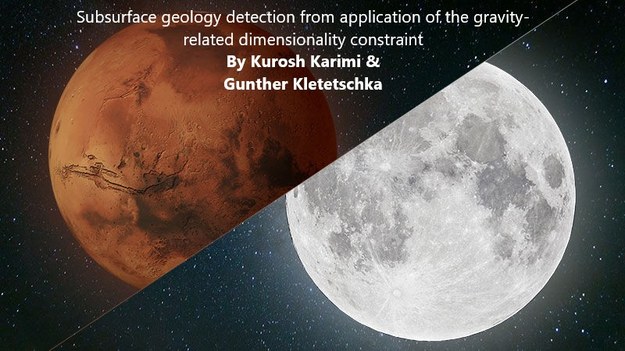An innovative method for detecting geology hidden beneath the surface
Everything in the ground has its specific density (mass of unit volume), for instance, two structures of roughly the same size may have very different masses and thus they will differ in their densities. A nice example of this simple principle are volcanic intrusions, which come from deeper parts of the Earth, and thus, have heavier material inside them (iron and other denser elements) than their surroundings. When we measure the gravity field on the ground, from air-planes or from satellites, rotating around planets, depending on the density variations of the underground structures, the magnitude of the field varies. For example, when there is a structure that is denser than the other material surrounding it, the gravity field goes up right over the head of this structure. The gravity field can, therefore, show us where the hidden underground anomalous body could occur.
Anomalous structures under the ground, nevertheless, do not have a neat structure and shape and therefore the authors considered several models in this paper. They tried to model these structures with prismatic bodies and came up with two models. “The first may be applied to a range of shapes from a thin elongated body like a wall hidden beneath the ground, to a point source like a spherical volcanic intrusion (diapir). The other model considers a range of shapes from the thin elongated body to a horizontally extensive tabular body. In the case of the wall, the horizontal extension is mainly in one dimension and the other dimension is negligible. We call these 2D structures. On the other hand, the point source and tabular body are called 3D” explains Kurosh Karimi and adds: “The innovative aspect of this work is that we present an approach for structures that transition between pure 2D and pure 3D states.” When applying the formulas presented in the paper, the researchers have to choose the model based on their judgement of the shape of the structure.
From the measured gravity field, gradient of the gravity field, and dimensionality indicator (a measure that tells us how the underground body looks like, if it is a thin elongated structure or is rather like a sphere or a tabular structure), the presented models enable to estimate the horizontal location and depth of the structures under the ground.
These models may be applied on any scale, from a planetary to micro scales. “In the paper, we calculated the appearance of the underground structures on the Moon areas the same size as large countries on Earth. However, , in applied geoengineering, these models may be also used in a very small area – they can for example help you find the horizontal location and the depth of a hole in the ground under a building or street,” says Kurosh Karimi, explaining the importance of his work for applied geophysics.

Document Actions